Information about Renewable Energy Promotion
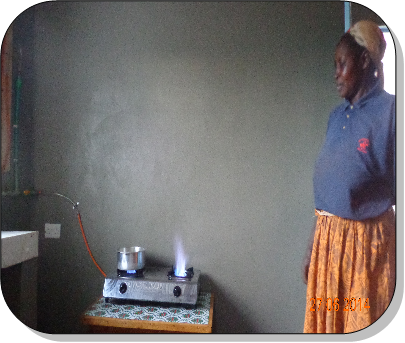
“Since I started using biogas in my house, the kitchen is free of smoke, the cooking is faster (Outcome of Renewable Energy Promotion)
And I no longer use firewood to cook anymore. Kiangure Springs Environment
Initiative have trained my family on how to use the bio-slurry in the farm. Iam
Now marketing vegetables in the local market earning and earning about
Ksh.300 a day”
Mrs.Ndang’ai Biogas Beneficiary,
Tetu Sub-County, Kenya
Background about Renewable Energy Promotion
According to Kenya’s Second National Communication to the United Nations Framework Convention on Climate Change (UNFCCC) the Land Use, Land Use Change and Forestry (LULUCF) sectors contribute significantly to GHG emissions,
Biomass fuels are the most important source of primary energy in Kenya with fuelwood (firewood and charcoal) accounting for over 68% of total primary energy consumption.
About 85% of the population in Central Kenya lives in the rural parts of the country. This segment of the population is totally dependent on the use of biomass consisting of firewood, charcoal, twigs, straw, crop residues, and cow dung to meet its energy demands for cooking and other domestic needs. It is estimated that the domestic biomass consumption for fuel is as high as 72% with very little use of modern sources of energy such as electricity and liquefied petroleum gas (LPG).The use of biomass as fuel has serious ill effects such as degradation of environment due to deforestation, loss of soil fertility due to diversion of animal manure which acts as fertilizer and various health hazards particularly associated with rural women and children due to Indoor House Pollution (IHP). It is estimated that in the past 50 years the land covered by forest has dropped from approximately 50% to less than3%. Some experts attribute this mostly to forest clearing for cultivation and cutting trees for fuel, activities highly exasperated by population growth.
The current rate of deforestation is estimated to cover 200,000 hectares of land per year. Unless the rate of deforestation is arrested, Kenya could lose all its natural forests in 20 years. Biomass combustion in households using traditional three stone fire place that lacks any provision for smoke exhaust exposes particularly women and children to smoke containing harmful products. Prolonged exposure to smoke is responsible for coughing, wheezing, acute respiratory infection, chronic obstructive lung disease, adverse pregnancy outcomes and lung cancer. Deforestation has made fire wood scarce as a result of which women and their young ones are forced to spend more time in fetching fire wood. In addition to being a heavy burden, fire wood fetching, in conjunction with other factors, is taking so much of the time of children that it may be said to be adversely affecting the literacy rate due to non-availability of time for education.
Schools, hotels, Tea factories and the cottage industries rely heavily on fuel wood and are one of the largest consumer of firewood in the catchment causing forest degradation , biodiversity loss and massive erosion. Many Rural households and businesses remain “off-grid” .This exclusion hampers rural socio-economic development and is leading the rural business community into using diesel generators, kerosene lamps, dry cell batteries, and candles contributing to GHG emissions and exposing them to related accidents and high costs. Rural communities cannot afford current electricity connection prices due to the prevailing cycle of poverty. Availability of affordable energy sources like solar will catalyze economic growth in rural areas and contribute significantly to emission reduction.
Finances have been a barrier in adoption of Renewable Energy Promotion & technologies in Africa and Kenya in particular.KSEI is providing subsidized and affordable options to promoting accessibility of these technologies to the poor.
The altered rainfall patterns resulting from climate change have also caused many communities to shift their focus from agricultural and livestock production which is their main stay to unsustainable livelihood activities such as cutting down of trees, charcoal burning and quarrying along the River banks and other vulnerable areas among other destructive activities to meet their financial obligations. These activities have not only depleted the natural resources in the County but have further fueled climate change and natural resources degradation. Like in most parts of Kenya, over 85% of the energy needs in Nyeri County are met by fuel wood and charcoal; as such there has been a great loss of vegetation cover in the region bringing about extensive soil erosion which has resulted in the decrease of agricultural productivity subsequently threatening the regions food security.
The root cause of many of these problems is directly linked to poverty and lack of employment opportunities. Currently more than 75% of the population in the project area depends directly on small-scale business enterprises and provision of unskilled labour for the neighboring commercial farms. Even with intensive environmental awareness and education campaigns, many community members are not able to change their lifestyles as a result of limited financial capacity. This situation is not likely to improve unless the community initiatives are supported in a bid to meet household energy requirements while contributing to climate change mitigation.
KSEI fabricates and distributes Improved Cook stoves(ICS) for households and institutions to reduce on the pressure exerted on local forests since over 80% of households in the Upper Tana Catchment rely on wood for fuel. We are Installing Institutional stoves and promoting Biomass Briquettes to save our forests. We promote Rocket Stove, Jiko Kiisasa, Miracle Stove and Jiko Smart among others.
Cook Stoves
KSEI fabricates and distributes Improved Cook stoves(ICS) for households and institutions to reduce on the pressure exerted on local forests since over 80% of households in the Upper Tana Catchment rely on wood for fuel. We are Installing Institutional stoves and promoting Biomass Briquettes to save our forests. We promote Rocket Stove, Jiko Kisasa (multi-purpose), Miracle Stove and Jiko Smart among others.
Jiko Kisasa (multipurpose)
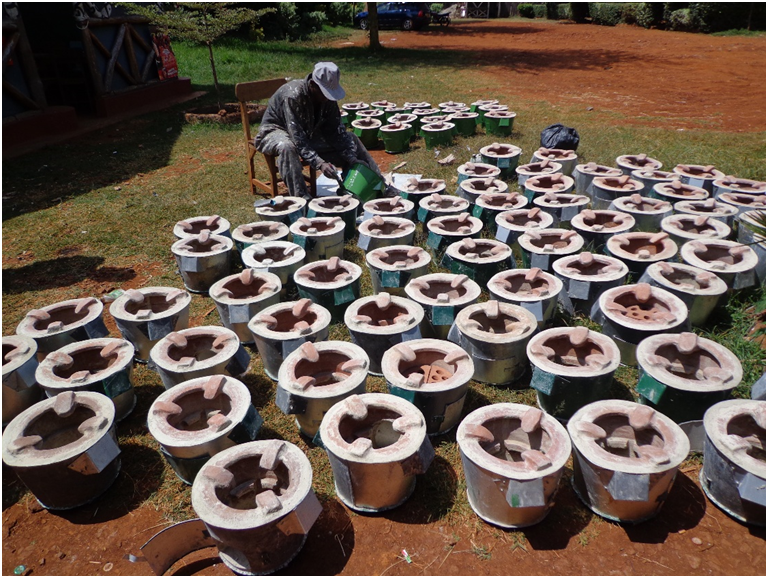
Stove Production Centre
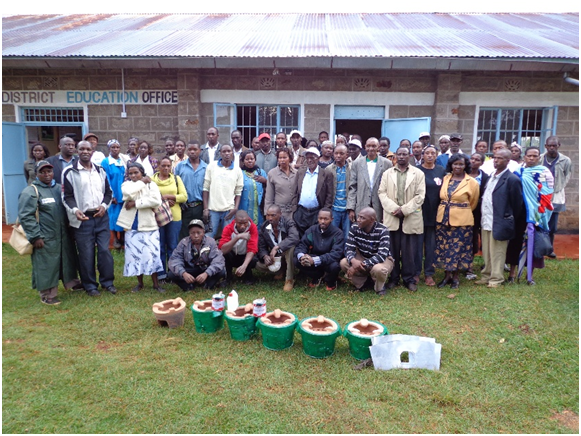
Stove Builders Training
BIOMASS BRIQUETTES.
Briquette making was introduced with an intention of complementing adoption of energy saving stoves with use of the right fuel that is less polluting. Briquettes will reduce dependency of the community on wood and charcoal as their major fuel. Briquettes are made from charcoal waste, farm residue, coffee husks to provide a source of income for local people involved in the fabrication process.
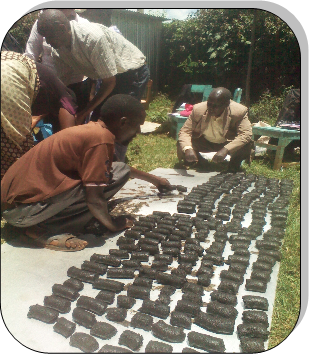
Briquettes Production
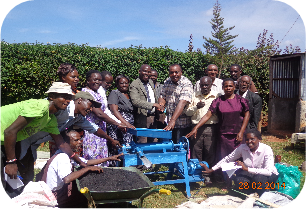
KSEI Board Members Receiving A briquette Making Machine From Kenya Forest Service
Biogas
KSEI is jointly working with dairy farmers ,Schools and businesses to enhance adoption of bio-gas technology in households,hotels and schools . The objective of this project is to increase the use of bio-gas energy in promoting sustainable rural development in Kenya and in reducing the negative global and local environmental impacts associated with the use of fossil fuels ,wood and the environmentally not sound management of the agricultural and solid waste.Over 300 bogas units installed in schools and rural households.
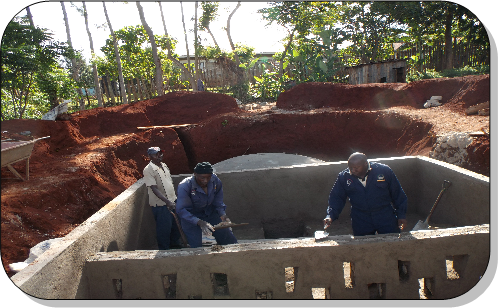
Institutional Bio-gas Construction
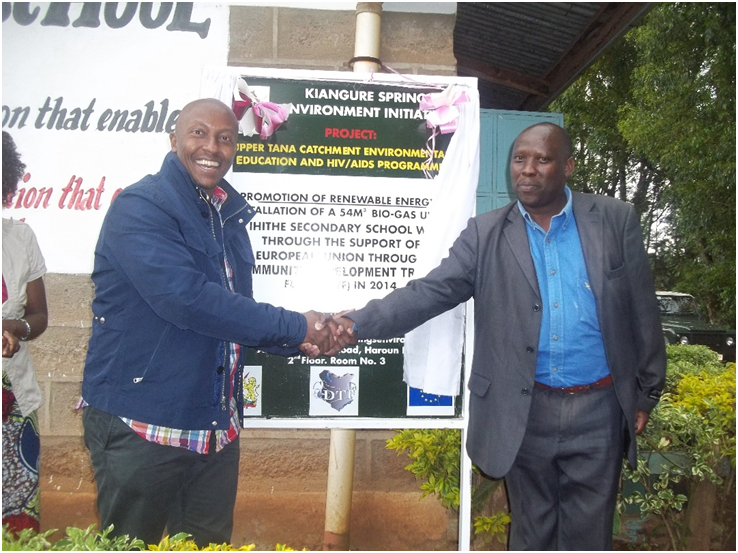
Tetu Member of Parliament Hon. Ndung’u Githinji Commissioning Bio-Gas at Ihithe Secondary School
